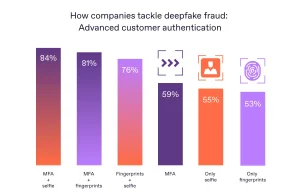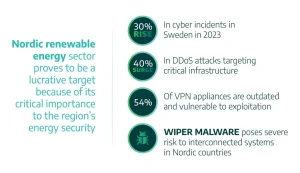Top Cybersecurity Threats of 2025 and How to Safeguard Against Them

Let’s face it—cybersecurity isn’t just about firewalls and antivirus anymore. By 2025, threats will be sneakier, faster, and way more personal. Here’s the deal: if you’re not prepared, you’re playing digital whack-a-mole with hackers who’ve leveled up. So, let’s break down what’s coming—and how to stay ahead.
1. AI-Powered Phishing Attacks (The Wolf in Sheep’s Code)
Gone are the days of obvious “Nigerian prince” scams. In 2025, AI will craft eerily personalized emails—mimicking your boss’s tone, your colleague’s writing quirks, even your mom’s texting style. Imagine getting a Slack message from “HR” about a bonus… that steals your login the second you click.
How to Fight Back:
- Verify, then trust: If a message feels off, call the sender—don’t reply.
- Use AI detectors: Tools like OpenAI’s classifier can spot AI-generated text (for now).
- Multi-factor authentication (MFA): Even if hackers get your password, they’ll hit a wall.
2. Ransomware 3.0—Now With Blackmail
Ransomware won’t just encrypt your files in 2025—it’ll leak them. Hackers are already combing victims’ data for embarrassing secrets (think medical records, HR complaints) and demanding payment to not expose them. It’s like a digital shakedown.
How to Fight Back:
- Air-gap critical backups: Keep backups offline where ransomware can’t touch them.
- Zero-trust architecture: Assume breaches will happen—limit access ruthlessly.
- Cyber insurance: But read the fine print—some policies now exclude “reputational harm” clauses.
3. Smart Home Hijacking (Your Fridge is Spying on You)
That “smart” thermostat? It’s a backdoor. In 2025, hackers will exploit weak IoT devices to jump into your home network—then pivot to laptops, phones, even baby monitors. One unpatched smart plug could give them a front-row seat to your life.
How to Fight Back:
- Segment your network: Keep IoT devices on a separate Wi-Fi guest network.
- Change default passwords: “Admin/admin” isn’t a password—it’s a welcome mat.
- Disable unused features: Does your toaster really need Bluetooth?
4. Deepfake Fraud (When Your Boss Isn’t Your Boss)
By 2025, deepfake tech will be so advanced that a 10-second voice clip could clone your CEO approving a “urgent” wire transfer. Scammers are already using this in boardrooms—and honestly, it’s terrifying.
How to Fight Back:
- Code phrases: Establish verbal passwords for sensitive requests.
- Slow down: Fraud relies on urgency. Demand written confirmation.
- Employee training: Teach teams to spot slight glitches in fake videos (like unnatural blinking).
5. Supply Chain Cyberattacks (The Weakest Link)
Hackers won’t just target you—they’ll hit your vendors, contractors, even the coffee shop’s Wi-Fi your remote team uses. One breached accounting software could cascade into thousands of companies. Remember the SolarWinds hack? That was just the warm-up.
How to Fight Back:
- Vet third parties: Ask vendors about their security audits—no vague answers allowed.
- Least privilege access: Vendors should only see what they absolutely need.
- Assume breaches: Monitor for unusual activity, even from “trusted” partners.
Final Thought: It’s Not About Fear—It’s About Habits
The scary truth? Most 2025 breaches will exploit basic oversights—reused passwords, ignored updates, that “harmless” browser extension. Cybersecurity isn’t about outsmarting hackers. It’s about making their job annoyingly hard. Start small. Patch your phone tonight. Then, keep going.






